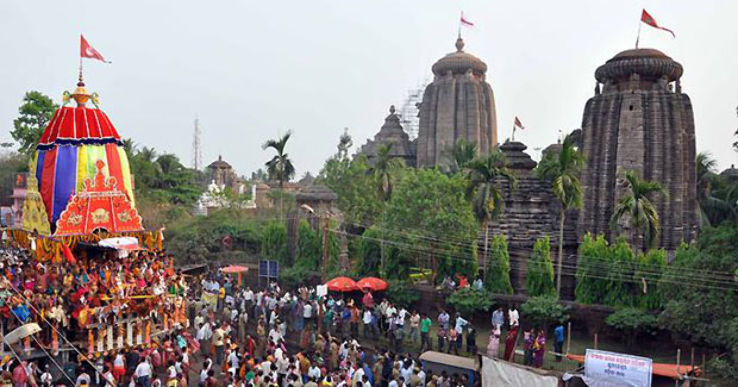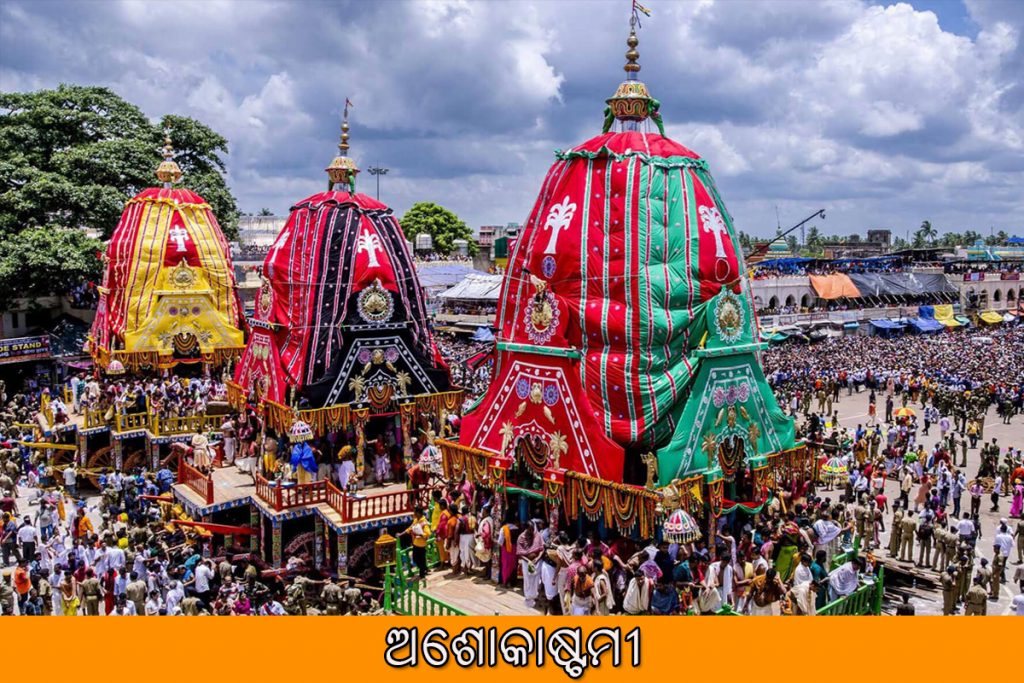
The month of Chaitramas is known as Shukla Ashtami, Ashokastami, and the chariot of this day is called the Rukuna Rath Yatra. Similarly, the day after Ashokastami, Ram Nabami is celebrated. As the name Ashoka was added the day before Ramanabami, the Ashoka forest of the Ramayana comes to mind. It is said that Sita Ashoka drank water and forgot about it. According to herbal medicine, the Ashoka tree is good for women. It is especially effective in relapsing constellations. According to some, Ravana was a scientist and created the Ashoka Forest to cure women’s major menstrual disorders. Ravana kept Sita there in the forest so that she would not be physically ill, especially women. It has nothing to do with Ashokastami celebrated in Odisha. Ashokban’s relationship with Ramanabami is also low. This is because the day is celebrated based on the date of birth. Ruknarath is named after Rukmini, the wife of Lord Krishna. Such naming dates back to the Vaishnava period. This chariot dates back to the time of Ashoka. This is the real victory chariot, but this victory does not belong to Shiva. Ashok’s victory by killing millions of Utkalis did not make him happy. Utkaliya’s warm blood revealed the hard covering of his heart. From Chandashoka, he was Dharmashoka. Today’s Rukuna chariot is the symbol of the victory that was celebrated in his honor. The place where the chariot comes from the Lingaraj temple is called Vijay Padia. Everyone thinks that Shiva wins the chariot because he killed Tripurasur and rode the chariot, and because the chariot of that chariot is Brahma, the chariot of the Rukuna chariot is called Brahma. But on the day of Ashokastami, Shiva is not celebrated anywhere except Bhubaneswar, and Tripurasur was not killed on this day. If it were, the festival would have been celebrated everywhere on the pedestal of Shiva or Mahadev. In fact, after Ashoka, the Shaiva culture absorbed Buddhist culture. Accordingly, in the chariot of Ashoka, the BJ idol of Shiva or Mahadev was replaced by the Buddha. Later, when the Utkal king was inspired by Vaishnavism, he defeated Dolgobind along with Shivamurti and placed Rukmini next to him and named the chariot Rukunarath. The temple where the Rukunarathas are descended from the chariot is known as the Rameshwar Temple. It is said that women who do not have children or die as children, live in Ashokastami the day before and bathe in Marichikunda on the morning of Ashokastami. As a result, they have children or do not die.
Ashokastami is one of the fourteenth expeditions of Lord Lingaraj, the lord of the Ekram region. It is called Ashokastami because of the dedication of Ashoka flowers to Lord Lingaraj during the procession of Lord Lingaraj on the eighth day of the lunar eclipse of the month of Chaitra. According to mythology, when Sita Ashoka, abducted by Ravana, was in the forest, he worshiped Lord Shiva by reciting Ashoka for reunion with Lord Rama on this eighth day of the constellation. According to that tradition, on this day, Hindu women perform eight vows and break their fast by dedicating Shiva to Shiva to attain peace and prosperity by alleviating the grief of themselves and their families. According to another opinion, Lord Ramachandra’s family came to the Ekamra forest and worshiped Lord Lingaraj on the advice of Kulguru Basishtha because he had committed the crime of killing Brahmin by killing Ravana. Satisfied with this, Lingaraj asked Ramchandra to worship and set up a temple at Rameshwar and asked the groom. Every year on the eighth day of the month of Chaitra, Shuklapaksha is promised to come to Rameshwar Peetha to pay homage to Lord Ramachandra, Lord Lingaraj comes to the Rameshwar Temple on this day in a procession to pay homage to Purushottam Ramachandra and his brothers. The chariot is called Rukuna Rath because of the Rukmini chariot of Basudev and Lakshmi, accompanied by the moving idol of Lingaraj Mahaprabhu Chandrasekhar.
According to Odisha Gazetteers-Puri (14), on the fifth day of spring, the Bauri service of the temple is used to collect chariots with new clothes. They go to the forest eight days before Shivratri and worship there by selecting chariot wood and bring it to the temple, and the chariot work begins after the great Shivratri. The chariot has four wheels and is 35 feet high. . The half-moon mark is drawn on the flag above the chariot. Statues of the Sun, Varuna, Agni, Indra, Durga, Shiva, Yam and Karthikeya are carved in wood around the chariot. The flag is hoisted at the top of the chariot after the chariot is cleansed and cleansed by the Brahmins who had been invited from Puri on the eve of the chariot ride. This is called the Net Festival. According to the Ekam Purana, a child is born by bathing naked in the Marichikunda of any infertile Mukteswar temple on the night of this Net Utsav. On the morning of Ashokastami, the first Rukuna chariot is worshiped after the completion of the temple’s Mangal Alati, Sahan Mela, Mahasnan and other pujas. In the middle of the chariot are Rukmini, Chandrashekhar on the right and Basudev on the left. Then the chariot race begins. After the chariot is finished, the chariot goes and stays at the Rameshwar temple near Mausima ‘Chowk. Lord Lingaraj stays there for five days and returns to his temple. The Ashokasthami festival is also celebrated for the purpose of Neelkantheshwar Deva of Chakradharpur under Kapileshwar, the head of Dia village near Nirakarpur and the sixteenth administration of Puri district, near Nirakarpur.
Comments
comments
